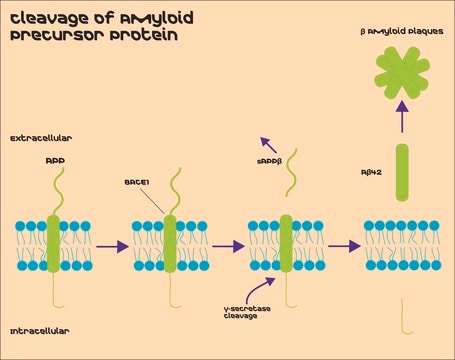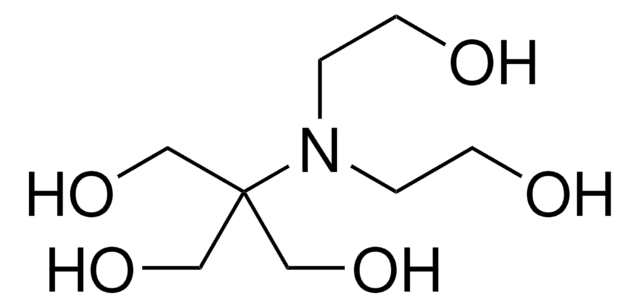Opis ogólny
A colorimetric assay kit to measure PTP1B activity. This convenient 96-well assay is useful for screening inhibitors and modulators of PTP1B activity.
Komponenty
Human Recombinant PTP1B (Cat. No. 539735), PTP1B Substrate (Cat. No. 539737), Assay Buffer, Phosphate Detection Agent, Phosphate Standard, RK-682 Inhibitor (Cat. No. 557322), ½ Volume Plate, and a user protocol.
Ostrzeżenie
Toxicity: Multiple Toxicity Values, refer to MSDS (O)
Charakterystyka techniczna
Assay Time: 2 h
Zasada
PLEASE READ THE ENTIRE PROTOCOL BEFORE PROCEEDING WITH THE ASSAY. CAREFULLY NOTE THE HANDLING AND STORAGE CONDITIONS OF EACH KIT COMPONENT. PLEASE CONTACT CALBIOCHEM® TECHNICAL SERVICES FOR ASSISTANCE IF NECESSARY.
NOTE: THE FOLLOWING PROCEDURES ARE INTENDED ONLY AS A GUIDELINE. THE OPTIMAL EXPERIMENTAL CONDITIONS WILL VARY DEPENDING ON THE PARAMETERS BEING INVESTIGATED, AND MUST BE DETERMINED BY THE INDIVIDUAL USER.
The Calbiochem PTP1B Assay Kit, Colorimetric is a nonradioactive assay designed for measuring PTP1B activity in purified prperations and for inhibitor or activator screening.
Uwaga dotycząca przygotowania
1. Thaw all kit components and hold the PTP1B Enzyme, PTP1B Substrate (IR5), and Assay Buffer on an ice bath; store Red Reagent at room temperature (RT).2. Reconstitute the PTP1B substrate to 1.5 mM by adding 88 µl 2X Assay Buffer and 88 µl of dH2O to 500 µg net peptide. Vortex. Following reconstitution, aliquot and freeze (-70°C).3. Prepare a phosphate standard curve:a. Prepare 1.2 ml of 1X Assay Buffer by diluting 600 µl 2X Assay Buffer with 600 µl dH2O.b. Pipette into duplicate sets of six wells: 100, 97.5, 95, 90, 80 and 70 µl 1X Assay Buffer.c. Pipette, into those same wells, in the same order, 0, 2.5, 5, 10, 20 and 30 µl of the 100 µM Phosphate Standard.d. These wells will contain, respectively, 0, 0.25, 0.5, 1.0, 2.0 and 3.0 nmol of inorganic phosphate.NOTE: PERFORM STANDARD CURVE IN DUPLICATE.
Przechowywanie i stabilność
Upon arrival store the 1/2 Volume Plate at room temperature and the remaining components at -70°C to maintain the highest stability. The PTP1B must be handled very carefully in order to retain maximal enzymatic activity. Thaw it quickly in a RT water bath or by rubbing between fingers, then immediately store on an ice bath. The remaining unused enzyme should be quickly refrozen by placing at -70°C. To minimize the number of freeze/thaw cycles, aliquot the PTP1B into separate tubes and store at -70°C.
Komentarz do analizy
Conversion of A620 to nmol of Phosphate with a Standard Curve.1. Plot standard curve data as A620nm versus nmol PO42-.2. Obtain a line-fit or fits to the data using an appropriate routine. Note that the plot may not be linear over the entire span from 0 to 3 nmol of phosphate. As shown in figure below, two linear fits, one for 0 to 1 nmol phosphate and a second for 1 to 3 nmol, can produce a more accurate correlation of A620 to amount of phosphate.3. Use the slope and Y-intercept of the appropriate plot to calculate amount of phosphate released for a particular data point.4. Example (sample calculation with the standard curve in the figure below):a) Measured A620 = 0.180. Since this A falls below that of the 1 nmol point in the figure, choose the 0 to 1 nmol fit, i.e. y = 6.58x - 0.386.b) Replacing x with A620 and y with nmol of PO42- produces:nmol of PO42- = 6.58(A620) - 0.386nmol of PO42- = 6.58(0.180) - 0.386nmol of PO42- = 0.798NOTE: For highest accuracy, a standard curve should be performed for each new set of assay data. This will normalize for variations in free phosphate in samples, time of incubation with the Green Reagent, and other experimental factors.Time Course and Rate Calculations1. Using a standard curve, convert A620 measurements for a series of time points to nmol of phosphate, as described above.2. Plot nmol of phosphate versus time and obtain the slope in nmol/min. If the slope is decreasing at later times, restrict the time points used in the slope determination to the earliest, linear part of the plot.3. It may be useful to calculate the total amount of phosphopeptide per well contained at the chosen substrate concentration. For example, at 75 M IR5 peptide in 100 l reaction that is:75 x 10-6 mol/L x 100 x 10-6 L = 7500 x 10-12 mol = 7.5 nmol4. Although when possible it is best to obtain initial rate data from the first few percent of substrate converted to product, this may not generate a sufficient signal for an accurate rate estimate. In practice, with PTP1B at 75 M IR5 substrate, time course plots remain linear for at least the first 15% of substrate hydrolyzed (~1 nmol of phosphate).Test Sample/Inhibitor Data1. It is important to obtain a "time zero" measurement and to subtract this value, expressed as nmol of phosphate, from both the control and test sample/inhibitor values. Again, a convenient way to obtain an accurate t=0 measurement is to add and mix the 25 l of Red Reagent into the 50 l of 2X Enzyme and then mix in the 50 l of 2X Substrate (see Time Course instructions).2. Calculate activity as a % of Control
3. Add additional controls as necessary. For example, while an extremely low reading will generally indicate that the test sample is a potent inhibitor, there is the possibility that the compound interfered with the color development. In such a case, an appropriate control would be to compare the color reaction obtained from 1 nmol of phosphate (10 l of 100 M Phosphate Standard) with and without added test compound [buffer alone with no enzyme or PTP1B Substrate (IR5)]; see Phosphate Standard Curve instructions).
Positive Control
Recombinant PTP1B
Inne uwagi
Elchebly, M., et al. 1999. Science 283, 1544.
Puius, Y.A., et al. 1997. Proc. Natl. Acad. Sci. USA 94, 13420.
Liu, F., et al. 1996. J. Biol. Chem. 271, 31290.
Fujii, S., et al. 1995. Neurosci. Lett.187, 133.
Harder, K.W., et al. 1994. Biochem. J. 298, 395.
Zhang, Z. Y., et al. 1993. Proc. Natl. Acad. Sci. USA90, 4446.
Martin, B., et al. 1985. J. Biol. Chem. 260, 14932.
Informacje prawne
CALBIOCHEM is a registered trademark of Merck KGaA, Darmstadt, Germany
Ta strona może zawierać tekst przetłumaczony maszynowo.









